Tuesday, December 04, 2007
Our RVs solar system
Firstly, a solar system is a way of charging batteries from sunlight. The main advantage is to keep the batteries charged even while the rig is not connected to the power grid, like if we are boondocking out in the desert. The panels take the sunlight and convert it into an electric charge, the solar controller handles the monitoring of the charge condition of the batteries & sends power to them when needed from the panels. We have two 100 watt panels that are high output type panels, delivering enough voltage that the controller can take the extra voltage and convert it into amperage so that under good conditions the panels will deliver more power to the batteries than just the 200 watts the panels are rated for.
The first five photos were taken by the folks at AM Solar when they installed the system.
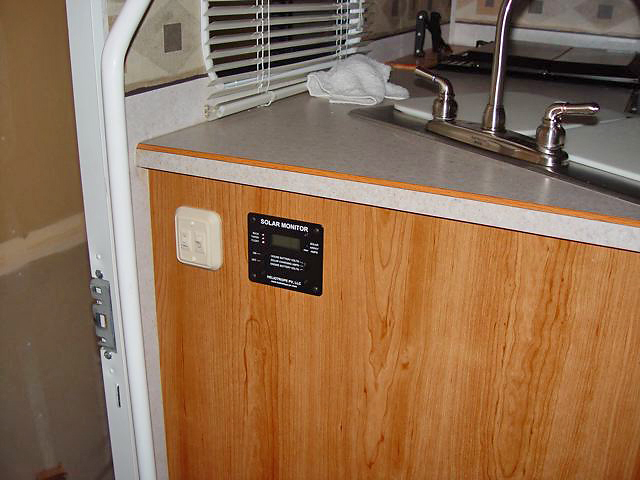
This shows the entry to our motorhome with a light switch and the monitor panel for the solar controller on the wall beside the entry steps. This panel tells us how much power we are getting from the system and what is or is not going into the batteries, as well as the charge state of the batteries.
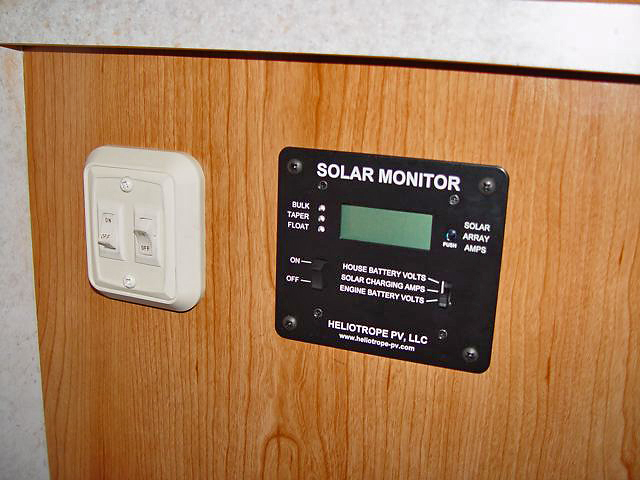
A closer view of that monitor. Our system will charge two battery banks so it also keeps up the engine starting battery, which is important if you will be stationary for a couple of weeks and not running the RV engine. You would be surprised how large the phantom loads on batteries in vehicles really are.
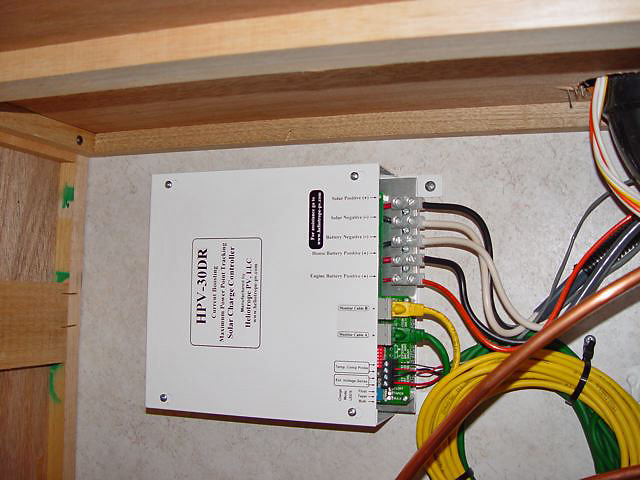
Here is the actual charge controller which is mounted out of sight under the kitchen cabinets. The batteries are located in a storage compartment directly below this which is good as you want to keep your wire runs as short as possible in order to avoid loss of power.
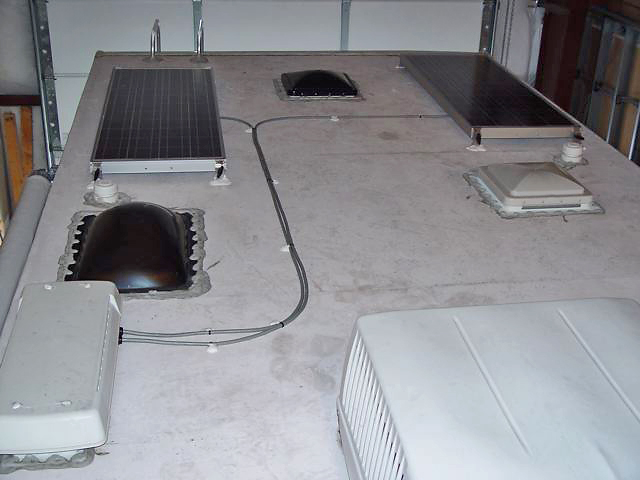
The actual solar panels are about 2 feet by 4 feet in size and mounted on the roof. We can tilt them which adds about 50% more output in the winter by aiming them at the sun rather than just leaving them flat on the roof. This isn't as important in the summer when the sun is higher in the sky so it shines more directly at a flat mounted panel. These panels should last almost indefinitely as there are no moving parts to wear out and the glass surface will resist direct hits by large hail and other road hazards. The wires go to a combiner box and from there down the fridge vent into the interior of the RV, so no new hole had to be cut in the roof. I like to keep holes in the roof to a minimum as they can turn into water leaks if you are not careful in keeping them caulked.
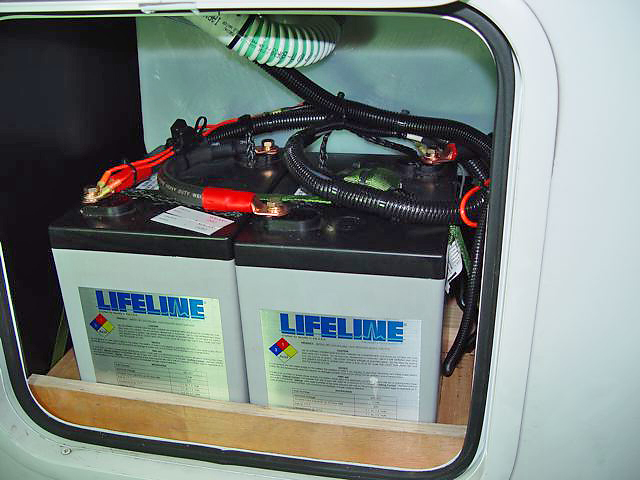
Most RVs come with pretty small batteries for use as house batteries. We upgraded to two Lifeline brand absorbed glass mat (AGM) 6 volt golf cart type units that together provide 220 amp hours of 12 volt power. This is only half the battery capacity I had in the Sea Breeze motorhome but I think it will be enough for our needs. I love the AGM type units as they are totally sealed and need no maintenance, plus have some other advantages. We can even run a small inverter to power things like the entertainment center that need 120 volt AC power.
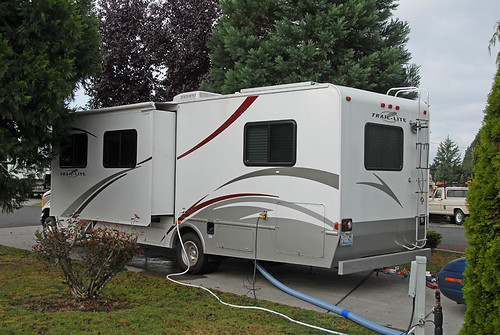
Here we are parked in our overnight space in a campground in Centralia, WA on our way home. You can see the typical RV hookups and my Saturn tow car connected to the tow bar and also one of the solar panels on the roof. Here we had power from the grid as you can see from the cable running from the side connector on the RV.
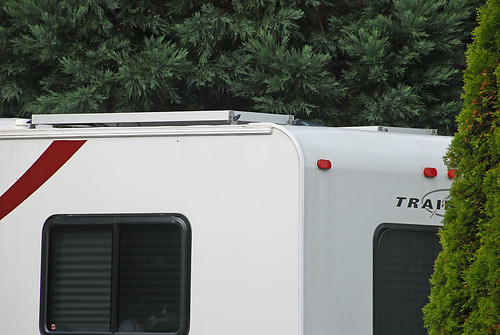
This telephoto shot shows both of the solar panels on the roof. They are pretty easy to reach to tilt toward the sun when that is needed. We do not carry anything else on the roof so didn't loose any storage by locating the panels there.
I really like having a solar system as it is working all of the time. If I leave the rig parked in it's storage lot for a period of time, even without a power hookup, it will keep both the engine starting and house batteries charged. They are also gentle and charge batteries properly and fully, tapering the charge down to just a trickle when they come up to full charge. These systems are fairly expensive but I think well worth their cost. Especially if you like to boondock away from power hookups.
Guess you'll have to drive somewhere to get any sun though, as there ain't any around here! Maybe you should get a rain system installed. :)
<< Home


